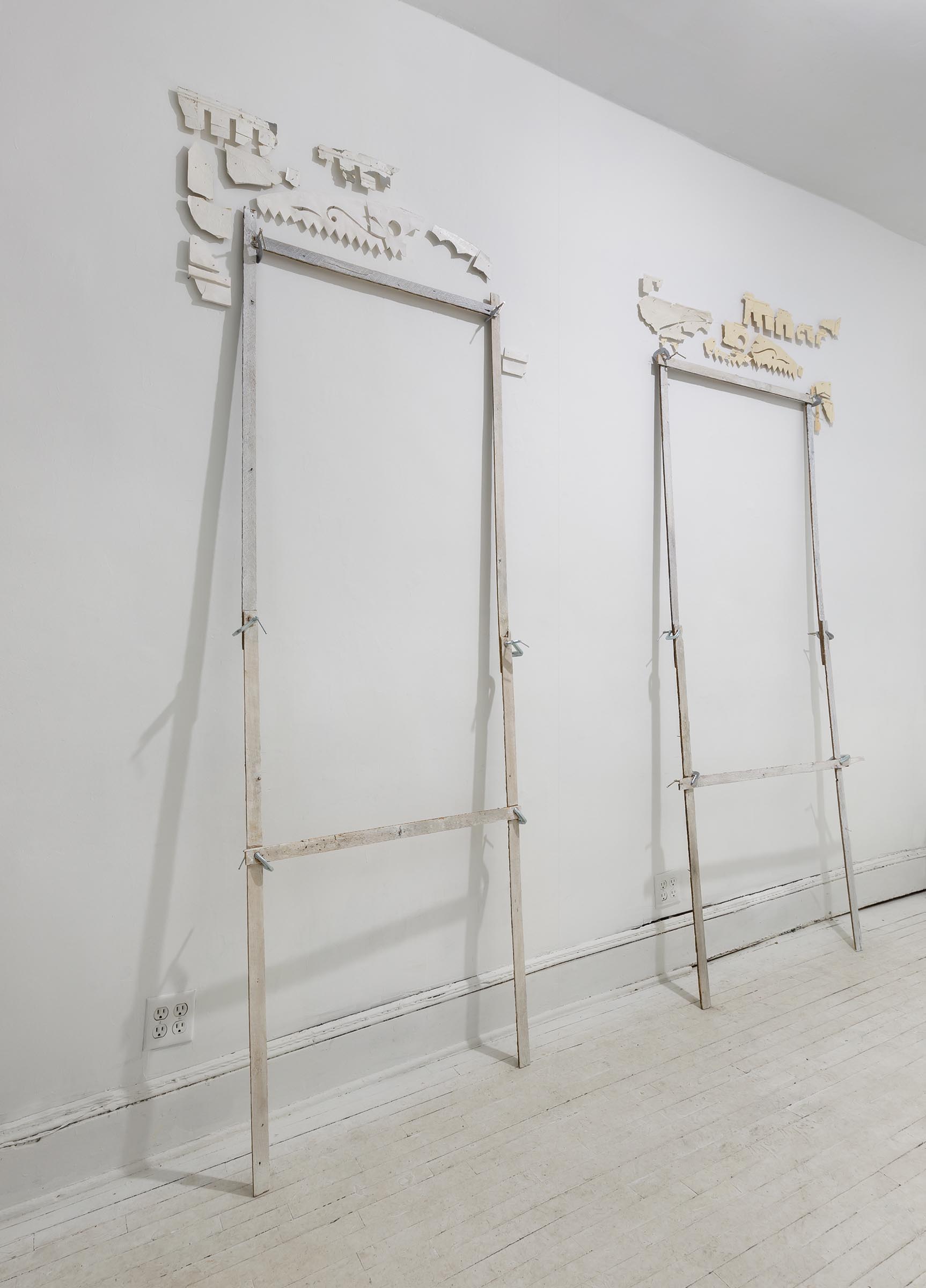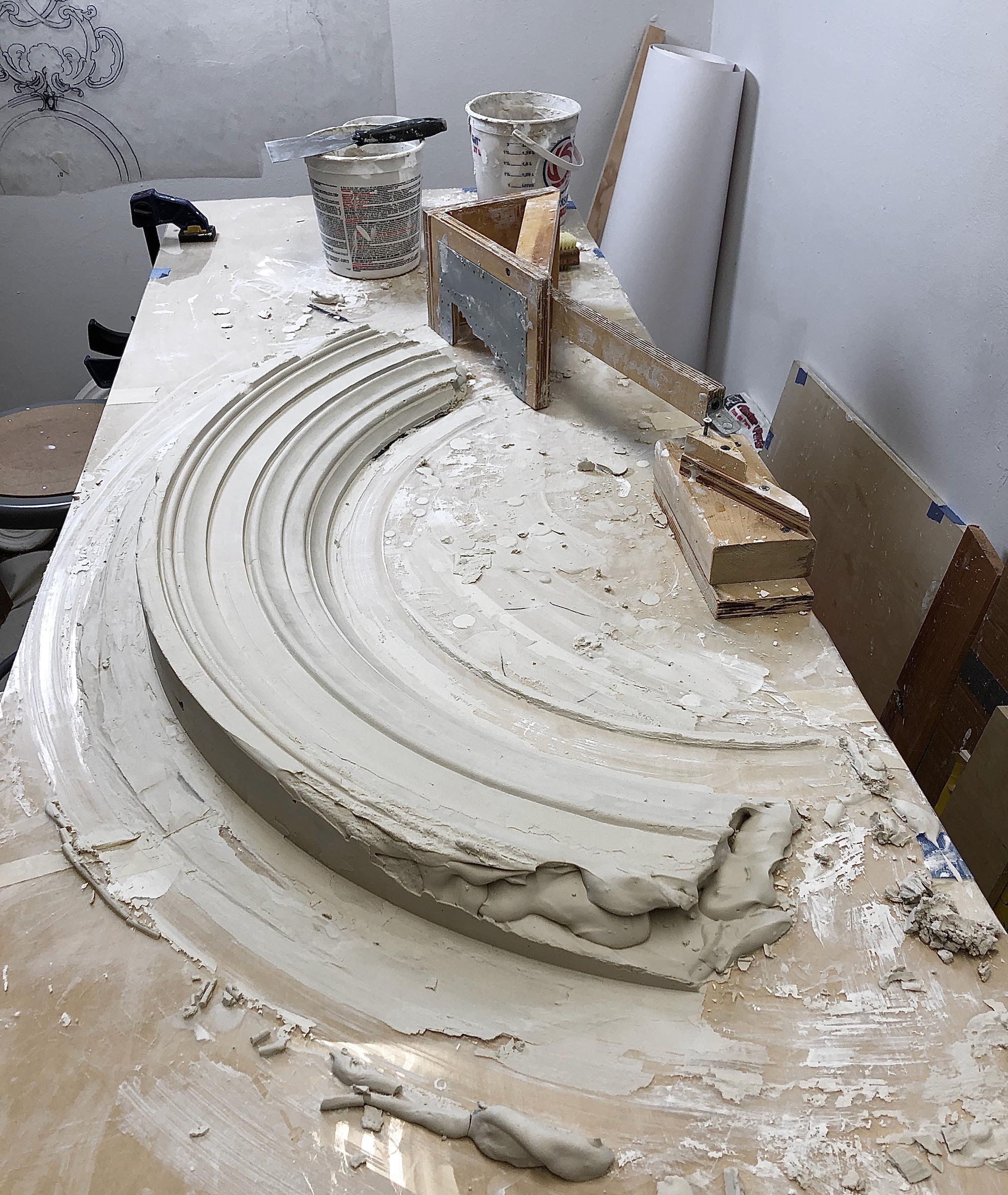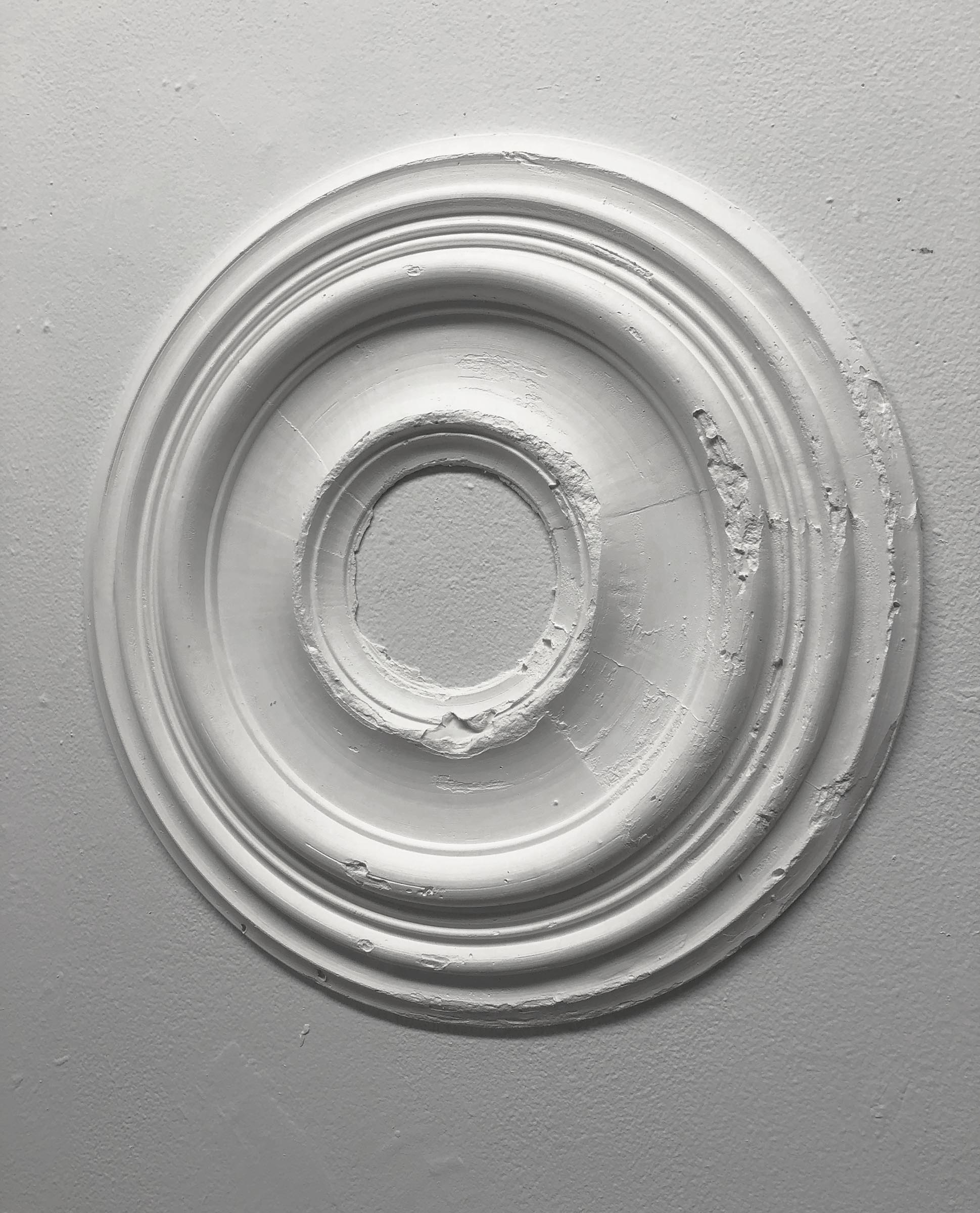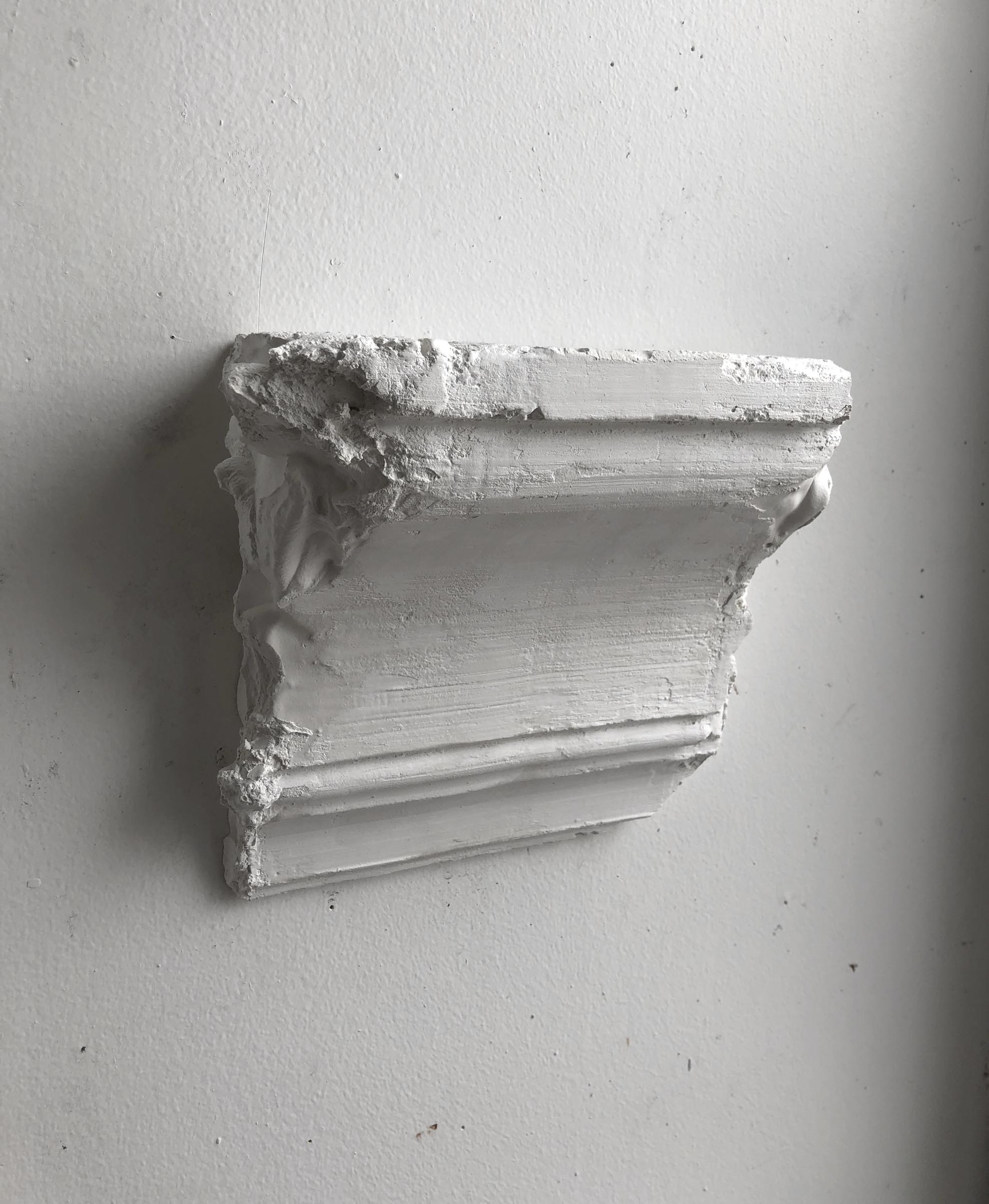How did you get into making art?
My interest in art began when I was young, but it was a High School art teacher that really helped me see myself as an artist. It was in large part her encouragement that enabled me to believe in myself and pursue art. In college I interned at a drop-in art studio for homeless adults in San Francisco’s Tenderloin district. So many different characters came through that space, and some of them were really incredible artists. The studio was a respite from the street, a calm space, a gathering place for all kinds of people, and a place of learning, where community was created. My experience there showed me that art is something that is so much more than a work hanging in a gallery. In my artmaking practice, I am always seeking out something that’s greater than what our eyes see when viewing a work of art.

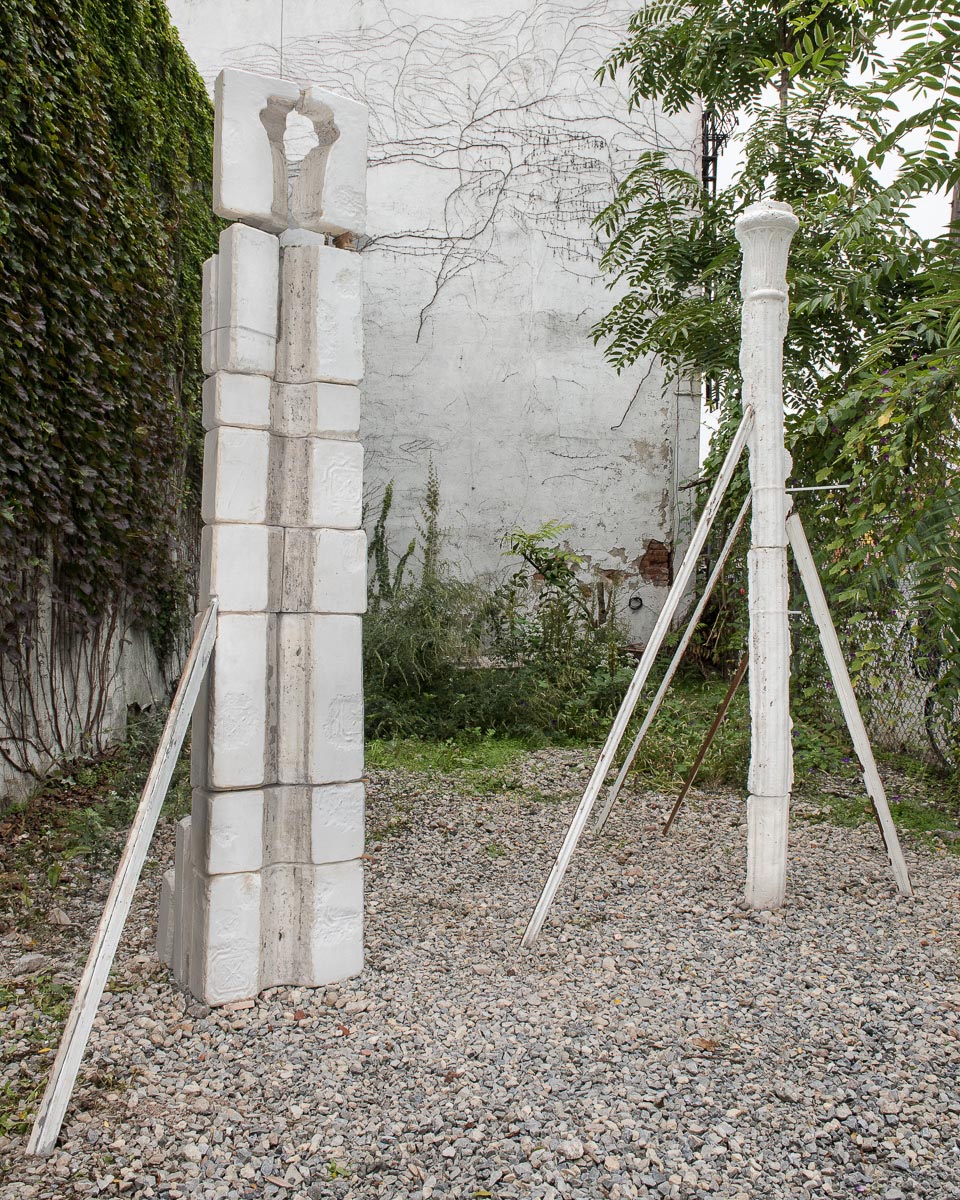
What are you currently working on?
Currently I’m working with a virtually obsolete method of making in-situ decorative plaster mouldings. This traditional method of run-in-place ornamental plasterwork involves creating a handmade tool called a mouldknife from sheet metal and wood. Wet plaster is daubed onto the wall, and the mouldknife gets run over the plaster. This extrudes the plaster through its form, creating the final moulding shape. This plasterworking technique is used primarily for restoration, and I am interested in using the language of memory and repair to make the work. Using this technique has provided me with a whole new framework for making sculptural works inspired by historic forms.
My practice is based in my interest in uncovering overlooked and forgotten histories.
Sonya Blesofsky
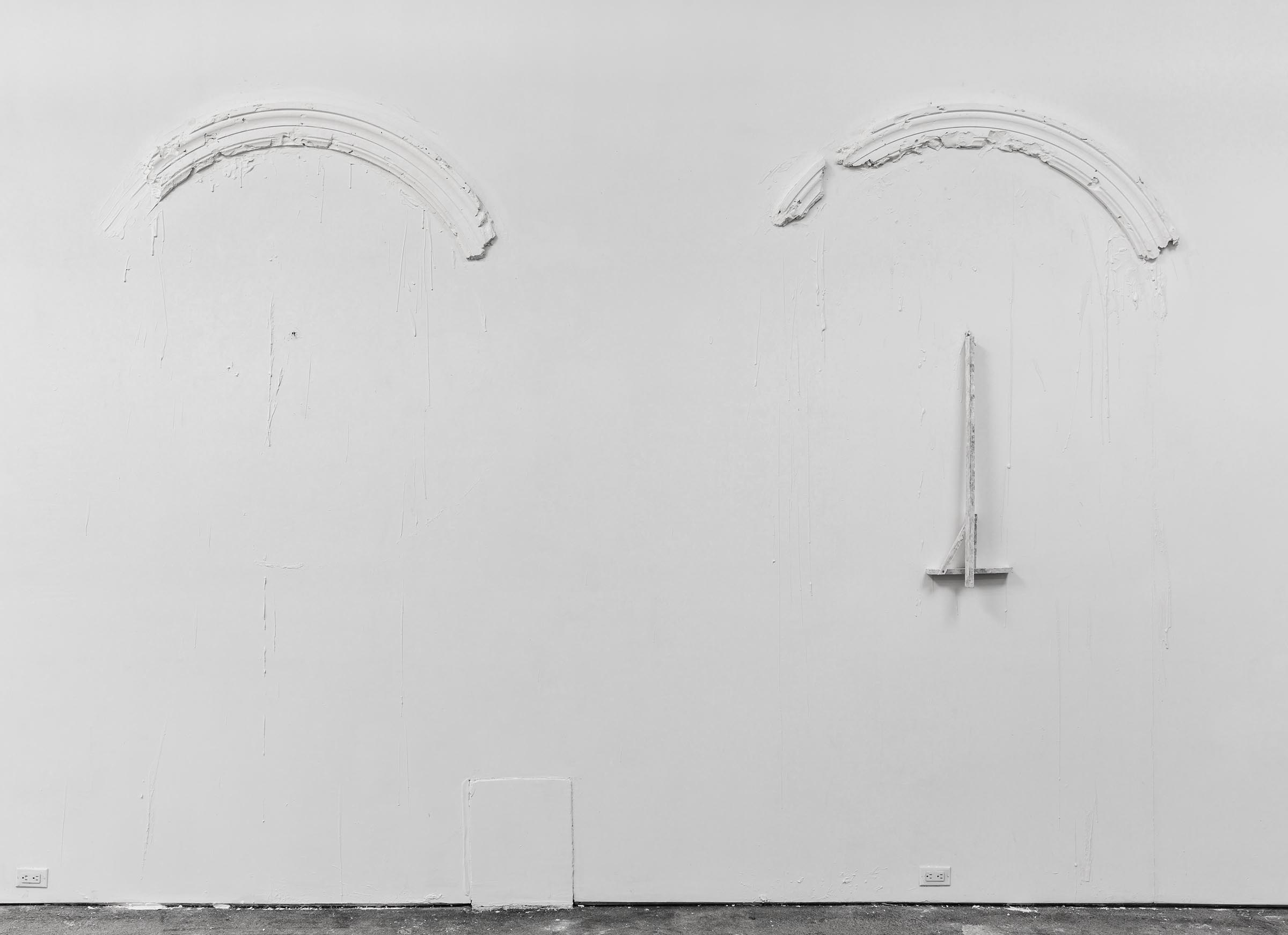
What inspired you to get started on this body of work?
My practice is based in my interest in uncovering overlooked and forgotten histories. My critical inquiry into plaster ornament began with my research into Colonial architecture. Ornamental plasterwork is the visible representation of European ideals of beauty, colonial power, and the erasure and marginalization of the colonized, people of color, and the working class. At the same time, this plasterwork is an important piece of our cultural heritage. The tension apparent in these seemingly opposing aspects of colonialist architecture is where my inquiry begins.
My use of historic techniques and materials stems from my attraction to the materials and forms, my fascination with artisan and craft traditions, my own internalized architectural Eurocentrism, and my disdain for this very attraction to notions of European ideals of beauty.
Through the physical act of making, I intend to act as both advocate and critic of the way in which history has been formed and perpetuated over time. Using this historic process allows me to embody the process of remembering, and in so doing, make it relevant to the stories we need to tell today. From Laurajane Smith, “Memory, unlike history, has an intimate relation to the present through the personal and collective actions of remembering.” My current body of work is a critical act of remembering in the present.
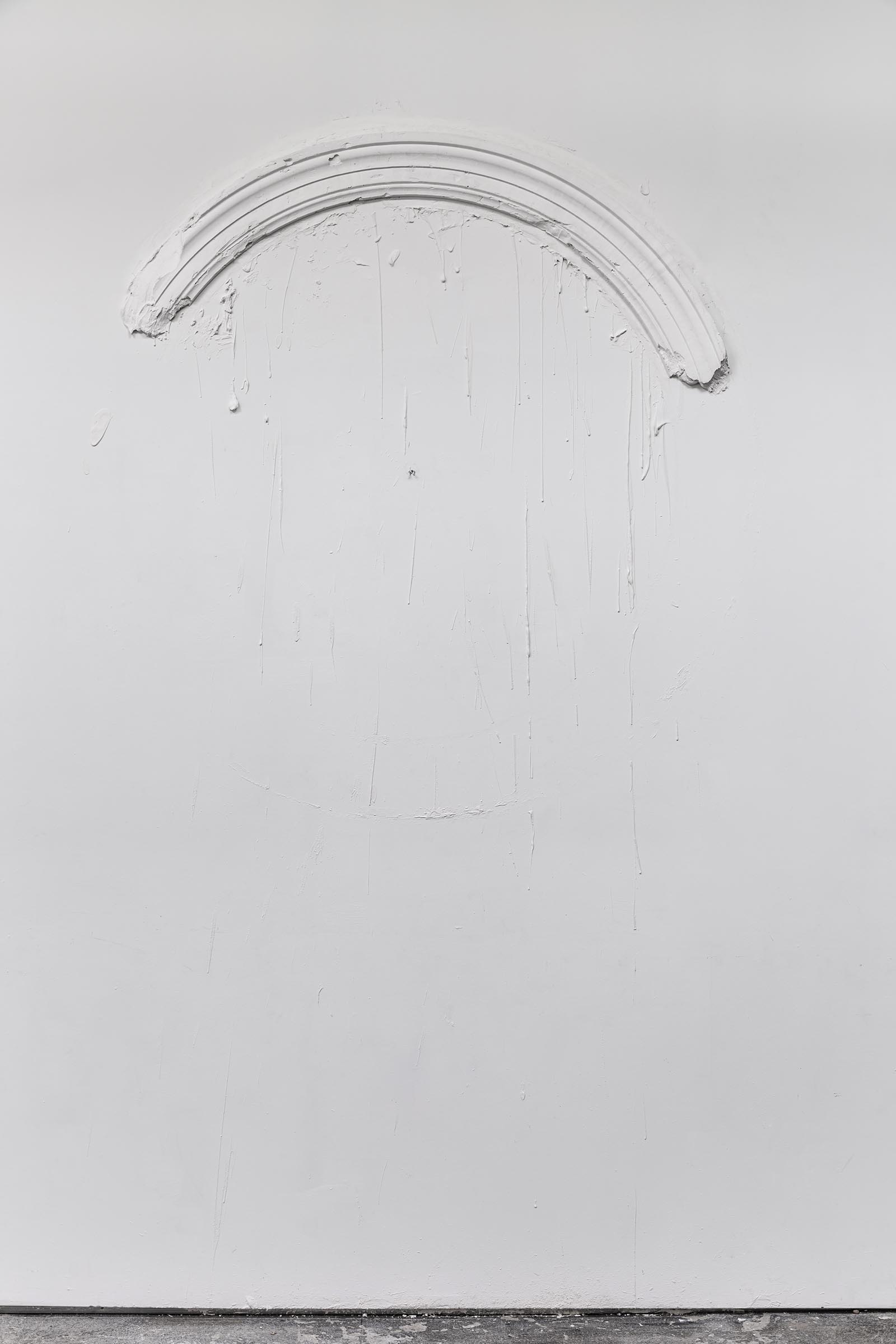
Do you work on distinct projects or do you take a broader approach to your practice?
Although I think of all my installations as part of one continuous investigation, my work is definitely project-based. Each project begins with a site, which serves as the subject matter for the work. I typically research each site through walks, bikerides, site surveys, interior excavations, trips to local archives, newspaper articles, and digital image and archival photo database searches. When I find a piece of information, image, or visible detail that keeps coming back to me, I dive in deep to discover what it is that is haunting. Then the project surrounds that haunting, but often takes on a life of its own once I begin working with materials.

What’s a typical day like in your studio?
I’m not sure there is a typical day! I tend to like to get outdoors before I spend time in the studio, and if I can build that into my commute by biking or walking there, I will. I often sort of putter around when I first get to the studio, drinking coffee and looking up images, info and vocabulary while I get settled in. From there, sometimes I am sawing wood or metal, pushing around wet plaster, or just cleaning up the mess from the day before. I hate cleaning my apartment, but I sort of love cleaning my studio—it’s a real reset. And it leaves my mind clear for the next thing.
Who are your favorite artists?
There are so many wonderful artists in the world! A few are: Do-ho Suh, Maya Lin, Phillida Barlow, Janet Cardiff, Mika Rottenberg, Maira Kalman, Gordon Matta-Clark, Nobuo Sekine.
Where do you go to discover new artists?
I read Hyperallergic and Artforum regularly, and look to Art21 and TateShots videos for excellent short docs about artists. Of course there’s always Instragram. But I think of instagram as too surface-level–and I often find myself going down a rabbit-hole, researching an artist I’ve found on Instagram, since I can’t find the deeper info in the app.

artwork by Sonya Blesofsky at Present Co.
Learn more about the artist by visiting the following links:



